| Home > Policy > White Paper, Notice, Announcement > White Paper > Japanese Government Policies in Education, Culture, Sports, Science and Technology 2002 >Chapter2 Section2.1 | ||
The academic ability that will be expected in the coming age has been discussed in the previous section. Now, turning to the topic of a desirable method of school education based on the actual circumstances of Japanese children, the following findings may be used for reference.
According to the results of the International Mathematics and Science Study conducted in 1999 by IEA (the International Association for the Evaluation of Educational Achievement), internationally, Japanese children rank highly in degrees of acquired knowledge and skills.
In addition, when current results were compared to the rates of correct answers for the same questions in mathematics and science at lower secondary schools in the past, there was no degradation in performance. ( Tables 1-2-1 and 1-2-2 ).
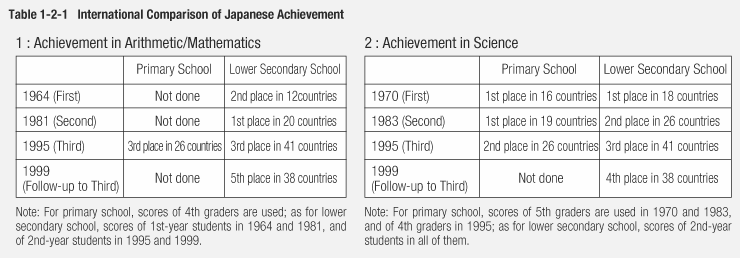
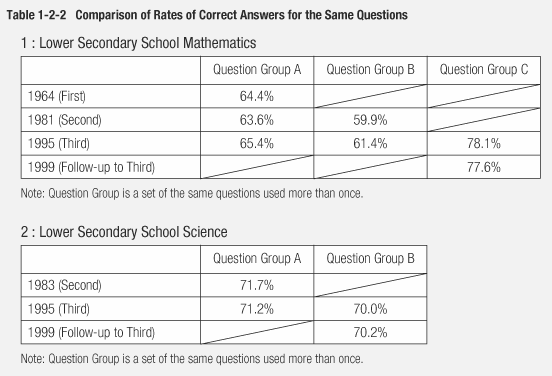
On the other hand, when looking at attitudes on mathematics and science, a problem is revealed that the percentages of those who like mathematics and science or who are interested in careers related to these subjects are low compared to other countries ( Table 1-2-3 ).
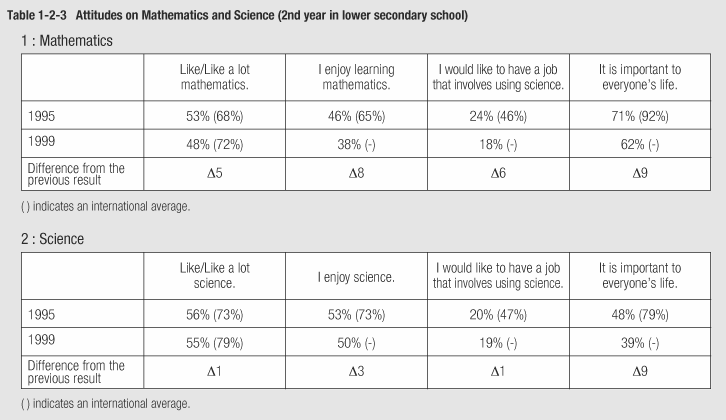
According to the results of the "Programme for International Student Assessment (PISA)" carried out by the OECD (Organization for Economic Cooperation and Development) in 2000, Japanese children also place highly internationally in abilities to exploit knowledge and skills for life ( Table 1-2-4 ).

There are some problems, however. For example, Japanese children have not acquired the willingness and habit to learn. This is indicated by the lowest ranking internationally in "Time spent on homework". Also, the ratio of students who have the highest level of reading literacy is almost the same as the OECD average ( Tables 1-2-5 and 1-2-6 ).
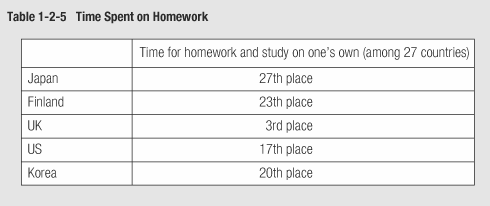

In the "Attitude Survey on School Education" conducted by the Ministry of Education in 1998, as to degree of understanding in lessons, for instance, the percentages of students who answered "I understand" (total of "I understand well" and "I understand more or less") to the question "Do you understand lessons at school well?" are: 68.1% of primary school pupils, 44.2% of lower secondary school students, and 37.3% of upper secondary school students, showing a tendency for children's comprehension of lessons to decrease as they advance to higher school stages. A similar tendency is also displayed in degrees of satisfaction in school education ( Table 1-2-7 ).
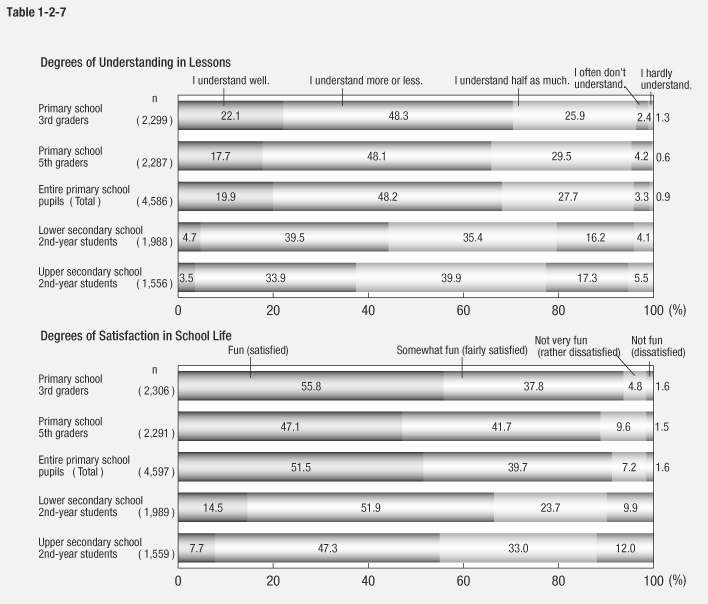
The "Questionnaire on Children's Hands-on Activities, etc." conducted by the Ministry of Education in FY 1998 has revealed a lack of opportunities for children to have experiences with nature and experiences in everyday life. For example, 26% of boys and 21% of girls had hardly ever "watched the night sky full of twinkling stars at leisure", 11% of boys and 24% of girls had hardly ever "caught insects such as butterflies, dragonflies, and grasshoppers"; and 21% of boys and 9% of girls had hardly ever "used knives and kitchen knives to peel fruits or cut vegetables". This survey has also indicated that children with more experiences with nature and experiences in everyday life tend to have a sense of morality and a sense of justice. In addition to these viewpoints, the results highlight the problem of the decreasing opportunities for children to reconcile the knowledge learned at school with reality ( Table 1-2-8 ).
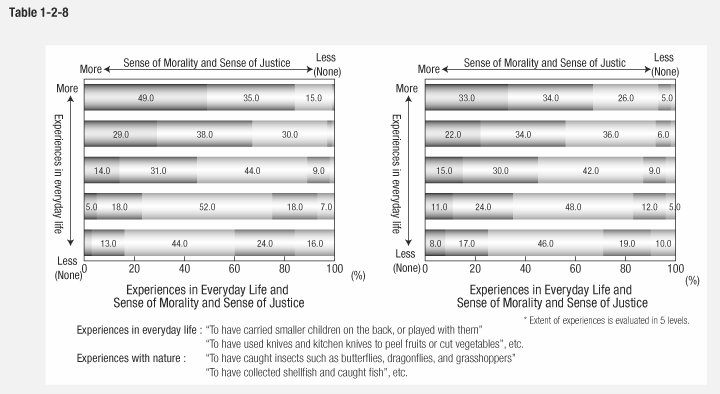
| Back To Top | MEXT HOME |